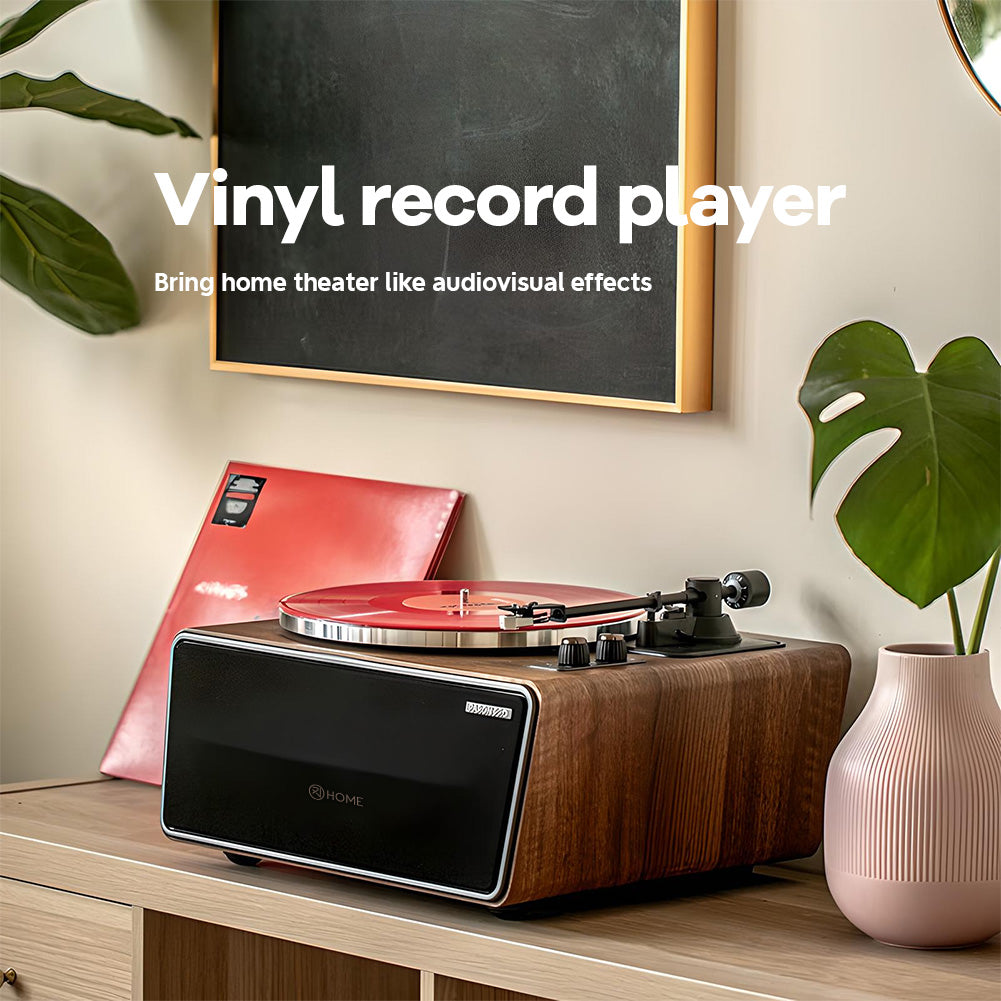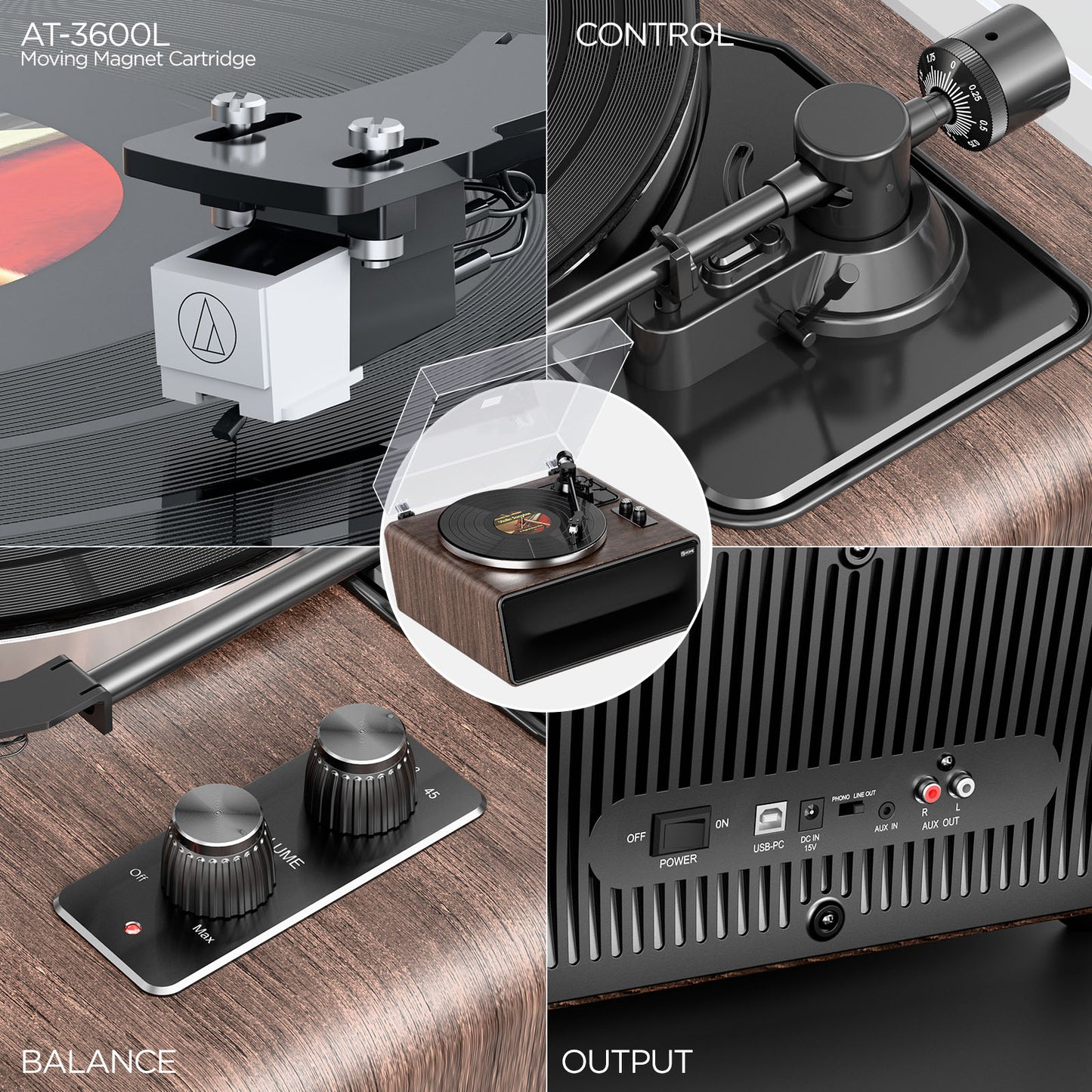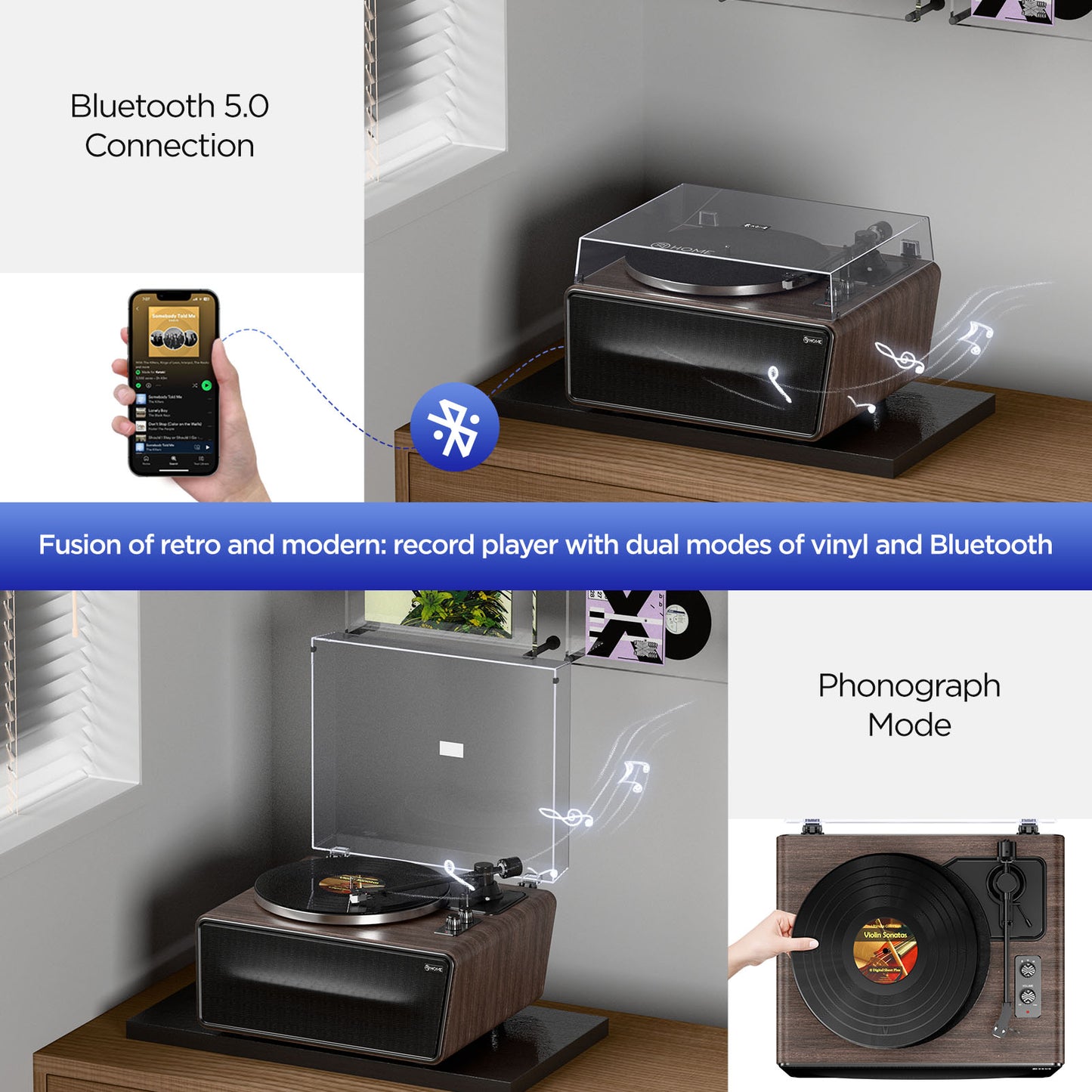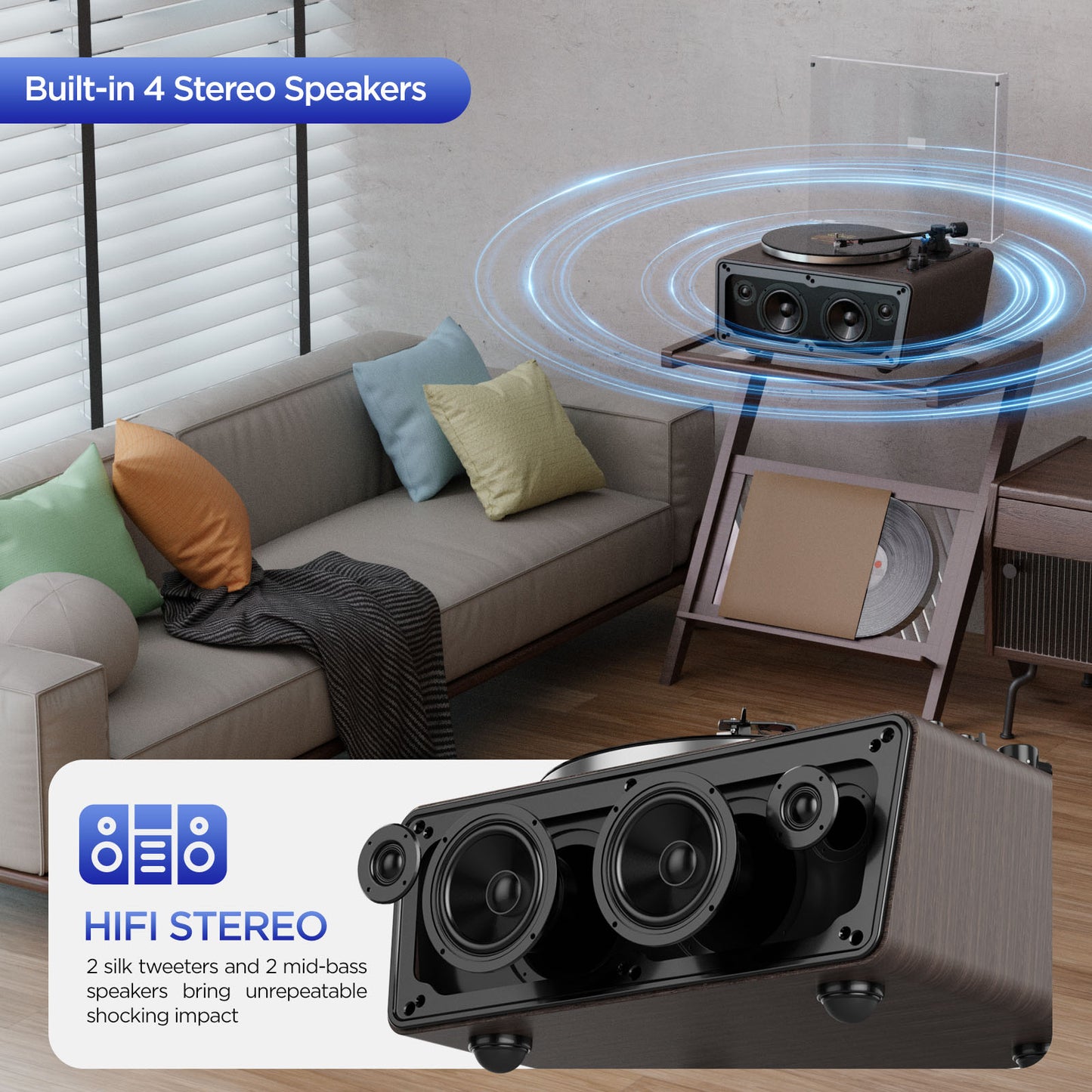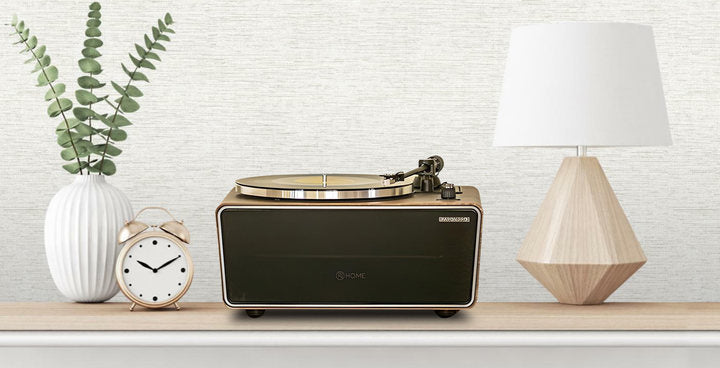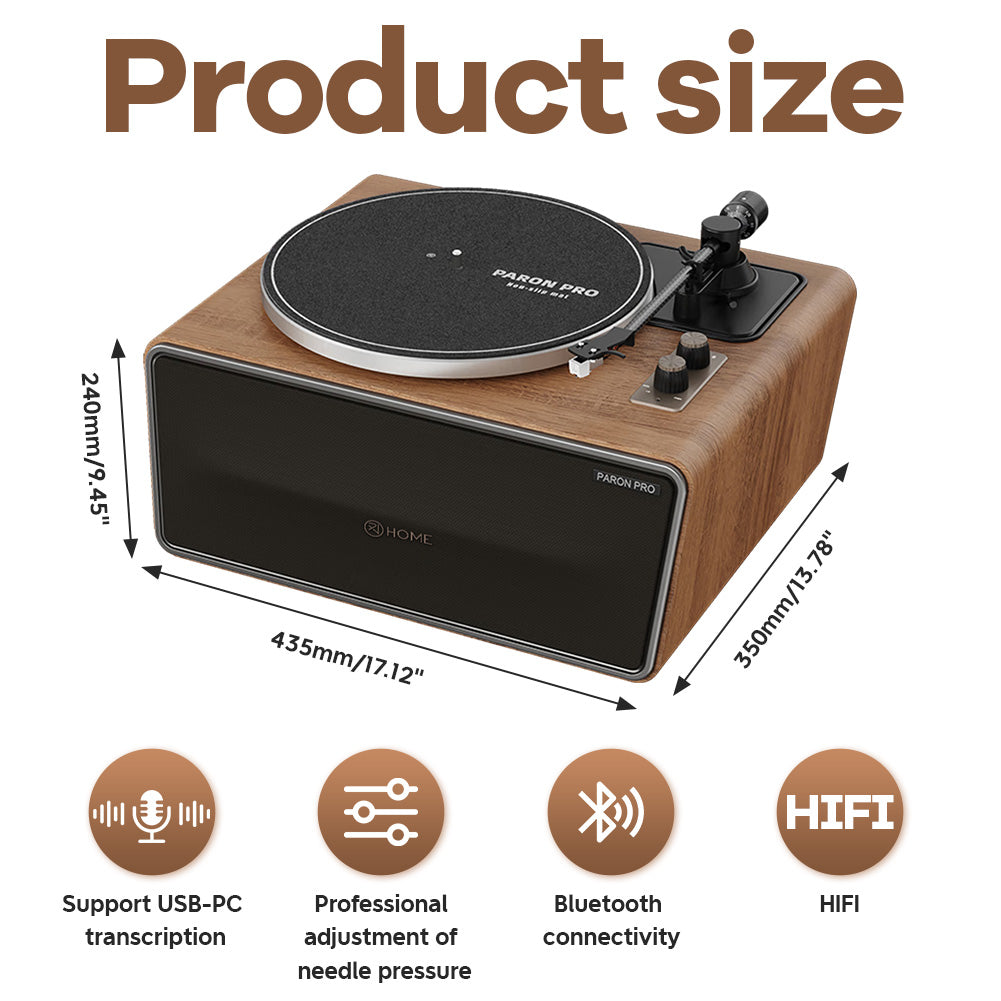
The Resurgence of Vintage Turntables: Repair or Replace?
Share
In recent years, vinyl records have made a remarkable comeback, fueling a renewed interest in vintage turntables. Audiophiles, collectors, and music enthusiasts are dusting off old record players or scouring flea markets and online marketplaces for classic models from brands like Technics, Pioneer, and Thorens. These vintage turntables, often prized for their superior build quality and warm sound, evoke nostalgia and a tactile connection to music that modern digital formats struggle to replicate. However, as these decades-old machines resurface, a key question arises: Should you repair a vintage turntable or replace it with a modern equivalent? This article examines the advantages and disadvantages of each option, delving into the practical, financial, and cultural implications of this analog revival.
The Allure of Vintage Turntables
Vintage turntables, particularly those from the 1960s to the 1980s, are revered for their exceptional craftsmanship. Models like the Technics SL-1200 or the Linn Sondek LP12 were built to last, with heavy platters, precision tonearms, and durable motors that often outperform entry-level modern turntables. Their aesthetic appeal—think sleek wood plinths or minimalist metal designs—adds to their charm, making them as much a piece of decor as a music-playing device.
Beyond aesthetics, many enthusiasts argue that vintage turntables deliver a richer, more authentic sound. Analog audio, with its inherent imperfections, captures nuances that digital formats can miss. For collectors, owning a restored vintage turntable is like preserving a piece of music history, a tangible link to the golden age of hi-fi.
Yet, these machines are not without their challenges. Years of use (or neglect) can lead to worn belts, failing motors, or degraded cartridges. Electrical components, such as capacitors, may require replacement, and finding parts for obscure models can be a challenging task. This brings us to the crux of the debate: is it worth repairing a vintage turntable, or should you opt for a modern replacement?

Repairing a Vintage Turntable
Pros of Repairing
-
Preserving History and Craftsmanship: Repairing a vintage turntable keeps a piece of audio heritage alive. Restoring a 1970s Marantz or Dual turntable to its former glory is a labor of love, rewarding enthusiasts with a sense of accomplishment and a unique piece of equipment.
-
Superior Build Quality: Many vintage turntables were built with high-quality materials that are rare in budget modern models. For example, the heavy platters and robust chassis of older models reduce vibrations, improving sound fidelity.
-
Cost-Effectiveness (Sometimes): If the turntable only needs minor repairs—such as a new belt, cartridge, or stylus—restoration can be cheaper than buying a high-quality modern turntable. A $50 repair on a $200 vintage Technics could yield a machine that outperforms a $300 new model.
-
Customization Potential: Repairing allows for upgrades, such as installing a better tonearm, cartridge, or phono preamp. This can elevate the turntable’s performance beyond its original specs, tailoring it to modern listening preferences.
Cons of Repairing
-
Time and Expertise: Repairs can be complex, especially for direct-drive models or units with electronic speed controls. Unless you’re skilled in electronics, you’ll likely need a professional technician, which can be costly and complex to find.
-
Availability of Parts: Sourcing parts for obscure or discontinued models can be a nightmare. While belts and cartridges are often universal, proprietary components like motors or circuit boards may be unavailable, rendering some turntables unrepairable.
-
Hidden Costs: What starts as a simple fix can snowball. A worn belt might reveal a failing motor, or a refurbished tonearm might require recalibration. Repair costs can quickly approach or exceed the price of a new turntable.
-
Reliability Concerns: Even a restored turntable may not be as reliable as a new one. Aging components can fail again, and older designs may lack modern conveniences, such as automatic tonearm lifts or USB outputs for digitizing vinyl.

Replacing with a Modern Turntable
Pros of Replacing
-
Reliability and Warranty: New turntables typically come with manufacturer warranties, ranging from 1 to 3 years, ensuring peace of mind. Modern models are less likely to require immediate repairs, making them a safer bet for casual listeners.
-
Modern Features: Many new turntables offer conveniences like Bluetooth connectivity, built-in phono preamps, or USB outputs for recording vinyl to digital formats. Brands like Audio-Technica and Pro-Ject cater to both beginners and audiophiles with these features.
-
Ease of Use: Modern turntables are designed for plug-and-play simplicity, often requiring minimal setup compared to vintage models, which may require calibration or manual adjustments.
-
Affordable Quality: Entry-level modern turntables, such as the Audio-Technica AT-LP60X or the Fluance RT81, offer excellent sound quality for under $300. These models rival or surpass the performance of mid-tier vintage turntables without the hassle of repairs.
Cons of Replacing
-
Loss of Character: New turntables, especially budget models, often lack the soul and aesthetic appeal of vintage ones. Plastic components and lightweight construction can make the product feel less substantial compared to the solid build of older models.
-
Sound Quality Trade-Offs: While high-end modern turntables, such as those from Rega or Clearaudio, offer exceptional performance, budget models may not match the warmth and depth of a well-maintained vintage turntable. Audiophiles may find entry-level new models lacking in character.
-
Environmental Impact: Replacing a vintage turntable with a new one contributes to electronic waste, as older units may end up in landfills. Repairing aligns better with sustainability goals, as it preserves resources and reduces waste.
-
Cost for Quality: To match the build quality and sound of a high-end vintage turntable, you may need to invest in a premium modern model, which can cost $500 or more. For budget-conscious buyers, this can be a significant drawback.
Making the Decision: Repair or Replace?
The choice between repairing a vintage turntable and replacing it with a modern one depends on your priorities, budget, and technical comfort level. Here are some guiding questions to help you decide:
-
Do you value history and craftsmanship? If you’re passionate about preserving a piece of audio heritage and enjoy the DIY challenge, repairing a vintage turntable may be the ideal solution. The satisfaction of reviving a classic model is hard to beat.
-
Is reliability a priority? If you want a hassle-free listening experience with modern conveniences, a new turntable is likely the better choice. Warranties and plug-and-play designs make them ideal for casual listeners or those new to the genre.
-
What’s your budget? Minor repairs can be cost-effective, but extensive restoration can get expensive. Compare the cost of repairs to the price of a new turntable with similar performance. For example, spending $200 to fix a vintage Dual might make sense if a comparable new model costs $400.
-
Are parts available? Research the availability of parts for your vintage turntable. If components are scarce, replacement may be the only viable option.
-
How important is sound quality? If you’re an audiophile seeking the warmth of analog audio, a restored vintage turntable or a high-end modern model will likely outperform budget new turntables. Consider upgrading components during repairs to maximize sound quality.
The Bigger Picture: Cultural and Environmental Impacts
The resurgence of vintage turntables reflects a broader cultural shift toward nostalgia and sustainability. In an era dominated by streaming services and disposable technology, vinyl and turntables offer a tactile and intentional way to engage with music. Repairing a vintage turntable aligns with sustainable practices, reducing electronic waste and honoring the durability of older designs. However, modern turntables cater to a new generation of vinyl enthusiasts, making the analog experience more accessible and convenient.
Ultimately, the decision to repair or replace is a profoundly personal one. For some, the journey of restoring a vintage turntable—tracking down parts, tweaking components, and hearing the needle drop—is as rewarding as the music itself. For others, the reliability and features of a new turntable make vinyl more approachable in a fast-paced world. Whichever path you choose, the revival of turntables underscores a timeless truth: music, in all its analog glory, continues to enchant across generations.


